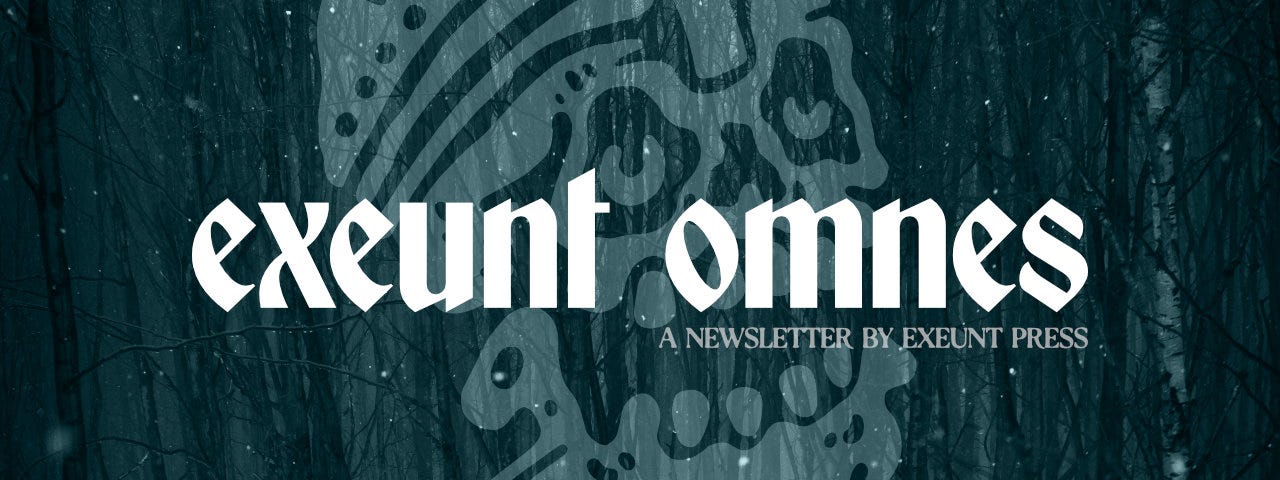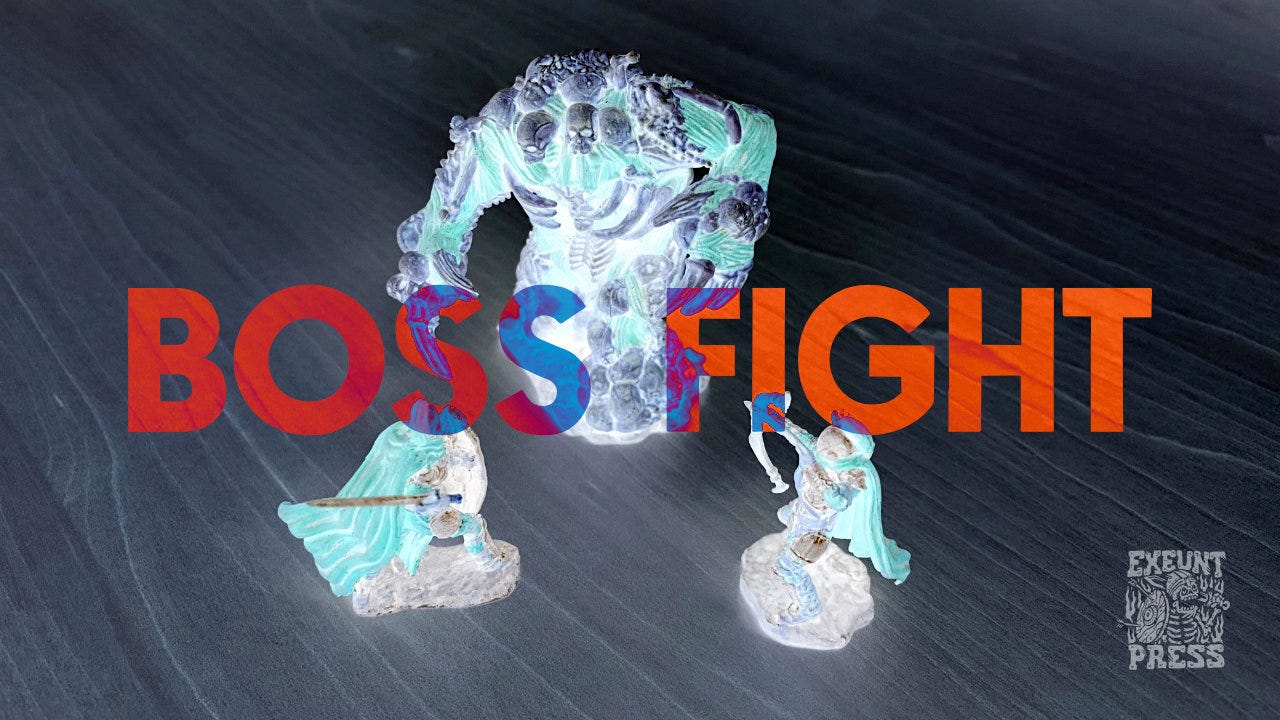Boss fight mechanisms in TTRPGs
Steal like an artist, 10 Affinity Publisher tips, boss fights, and Successors
TL;DR Summary
🧑🎨 Reading Steal Like an Artist by Austin Kleon
⚠️ 10 things I wish I knew about Affinity Publisher
👹 Boss fight mechanisms in TTRPGs
🎲 Recently played: Successors (Fourth Edition)
🧑🎨 Steal like an artist
Having read Show Your Work and learning quite a bit about how to market your indie game, I decided to also read Steal Like an Artist, also by Austin Kleon.
These are slim, square books of about 150 - 170 pages. Could they be a blog post instead? Probably. There is something, however, that makes this information easier for me to digest while reading it in printed form.
The goal of this one is to “unlock your creativity” using ten principles:
Steal like an artist.
Don’t wait until you know who you are to get started.
Write the book you want to read.
Use your hands.
Side projects and hobbies are important.
Do good work and share it with people.
Geography is no longer our master.
Be nice.
Be boring.
Creativity is subtraction.
I’m hoping this will be a good companion to the lessons learned in Show Your Work. If it is, you might see a future Skeleton Code Machine with my summary and thoughts.
Have you read any of Austin Kleon’s books? What did you think? Let me know in the comments!
⚠️ 10 Affinity Publisher Tips
I made many mistakes in my first attempt at printed design with Mammoth. They were all fixable, but wasted a considerable amount of time!
Two weeks ago I put together a list of things I wish I knew when I first started using Affinity Publisher. My hope is that it saves some time for people new to making printed zines, with topics like CMYK colors, rich black vs. standard black, gutters, bleed, and more.
Learn from my mistakes, and read it at Skeleton Code Machine.
👹 Boss fight mechanisms in TTRPGs
If you’ve been following along, you know that I’ve been investigating alternatives to the usual combat systems of TTRPGs for an upcoming project. Some examples might be zero luck combat, random turn order, attacking weak points, and opposed rolls.
Related to that, there was a discussion of boss fight mechanisms worth stealing from video games on Reddit recently.
Here are some of the most interesting bits:
Secondary health bars: Whether it’s similar to the defiance bar in Guild Wars 2, special armor that has to be broken first, or some other bar, this can definitely give a “boss” feel to foes.
Extra tasks to maintain the fight: Destiny is mentioned as an example, and I think Warhammer 40,000: Darktide is a great example too. While you are fighting a boss in Darktide, you might also have to keep fuel cells in place or maintain data interrogators. I’d imagine this works better in multiplayer games vs. solo games.
This isn’t even my final form: Transforming or staged foes similar to the Angry GM’s 4e Boss Fight or Paragon Creatures are fairly common in video games, and can be adapted to TTRPGs. Using multiple hit point pools or danger clocks might be ways to implement this. It also provides a great opportunity for “You fool…” monologues during each transition.
Just survive: Video games sometimes have final mission battles where the goal is to just survive for a certain amount of time rather than defeat a specific foe. The timer could be waiting for someone to arrive, closing a magic portal, or allowing a mechanical device to activate. Examples include The Ascent, and Ghost Recon: Wildlands.
Changing locations: In many cases, a boss fight takes place in a single room or location, almost like an arena. It’s possible to have the boss change the map itself either opening up new areas or closing off part of the map, creating a dynamic battlefield. Although I haven’t played it yet, Diablo IV might be an example.
This thread made me think about how it’s not just turn-based video games (e.g. Divinity: Original Sin) that can inspire tabletop mechanisms. Action games, first-person shooters, RTS games and others can all help you think of interesting ways to design your own games.
🎲 Recently played: Successors
I was fortunate enough to play many board games in the last few weeks! I’d love to talk about a few of them, but instead I’ll just choose one: Successors: Fourth Edition designed by Richard Berg and Mark Simonitch.
Alexander the Great has died (323 BCE) and left no clear heir. The players represent the factions in the Wars of the Diadochi (322 - 281 BCE) attempting to claim the empire.
Originally designed in 1997, this game definitely shows it’s hex and counter era wargame roots. There are combat results tables (CRTs) all over, piles of tokens, and a dense rulebook. It has an interesting card-driven game engine at it’s core (i.e. Tyche cards, shown above), however, that is still interesting and elegant even by today’s standards.
We played a “short” scenario that ran about four hours long, but what an experience! This is a game that I can’t stop thinking about after it ended, and look forward to playing again.
Thanks for reading Exeunt Omnes!
Check out exeuntpress.itch.io for all the latest Exeunt Press games and resources!
- E.P. 💀






On the topic of video games as inspiration for TTRPGs, I recently watched this video: https://youtu.be/Dt9bey6DCZw
It looks at the lessons we can learn from FPS maps (It's a relatively new YouTuber but their content is great) This one is well worth a watch, though I'm left frustrated at the lack of easily represented verticality in TTRPG maps. Anyone have any solutions (that don't involve sculpted environments - sorry, I don't have the space)?
Boss fight tips were great. As someone who doesn’t really play video games, these are really cool thoughts to chew on thanks so much!